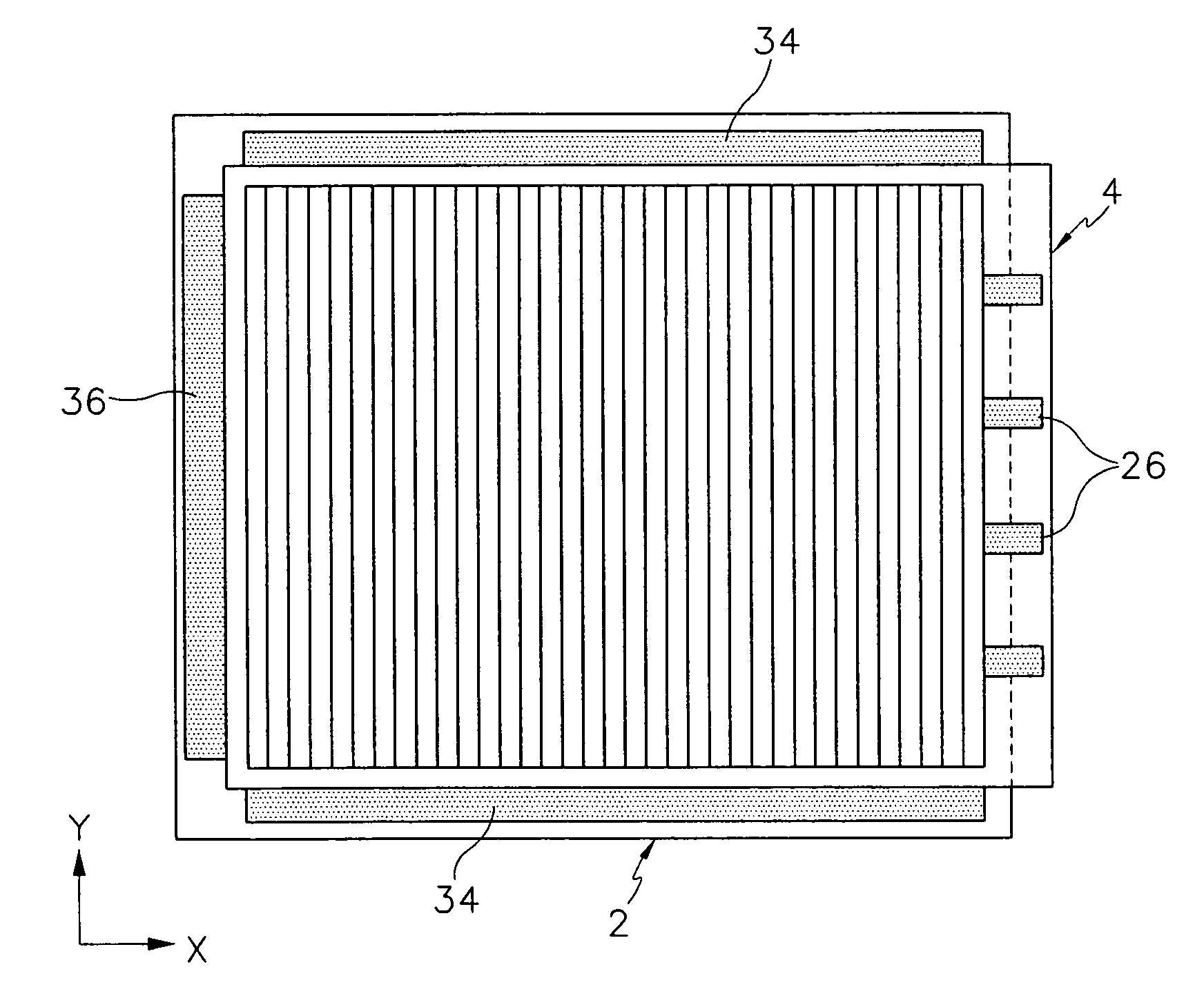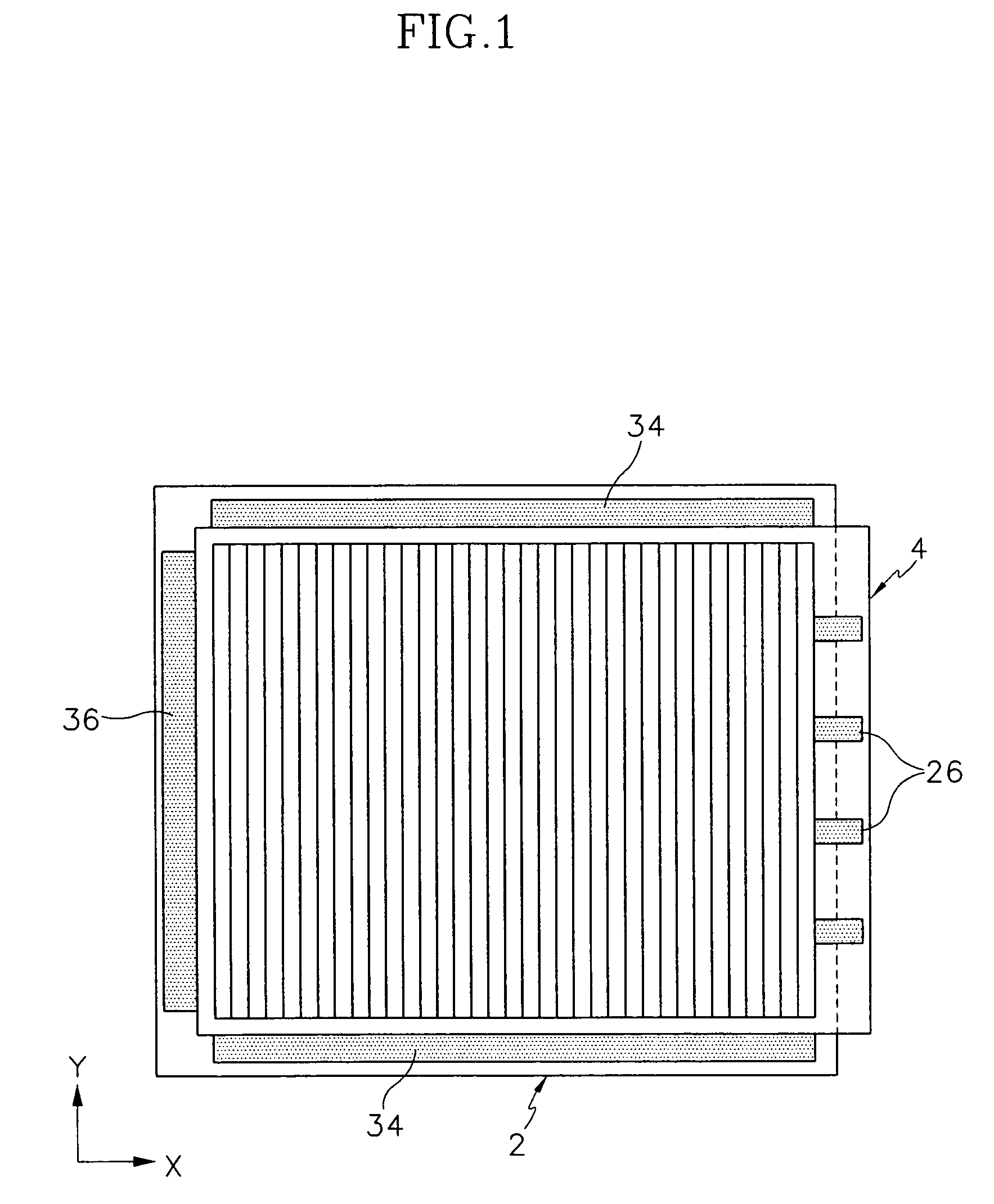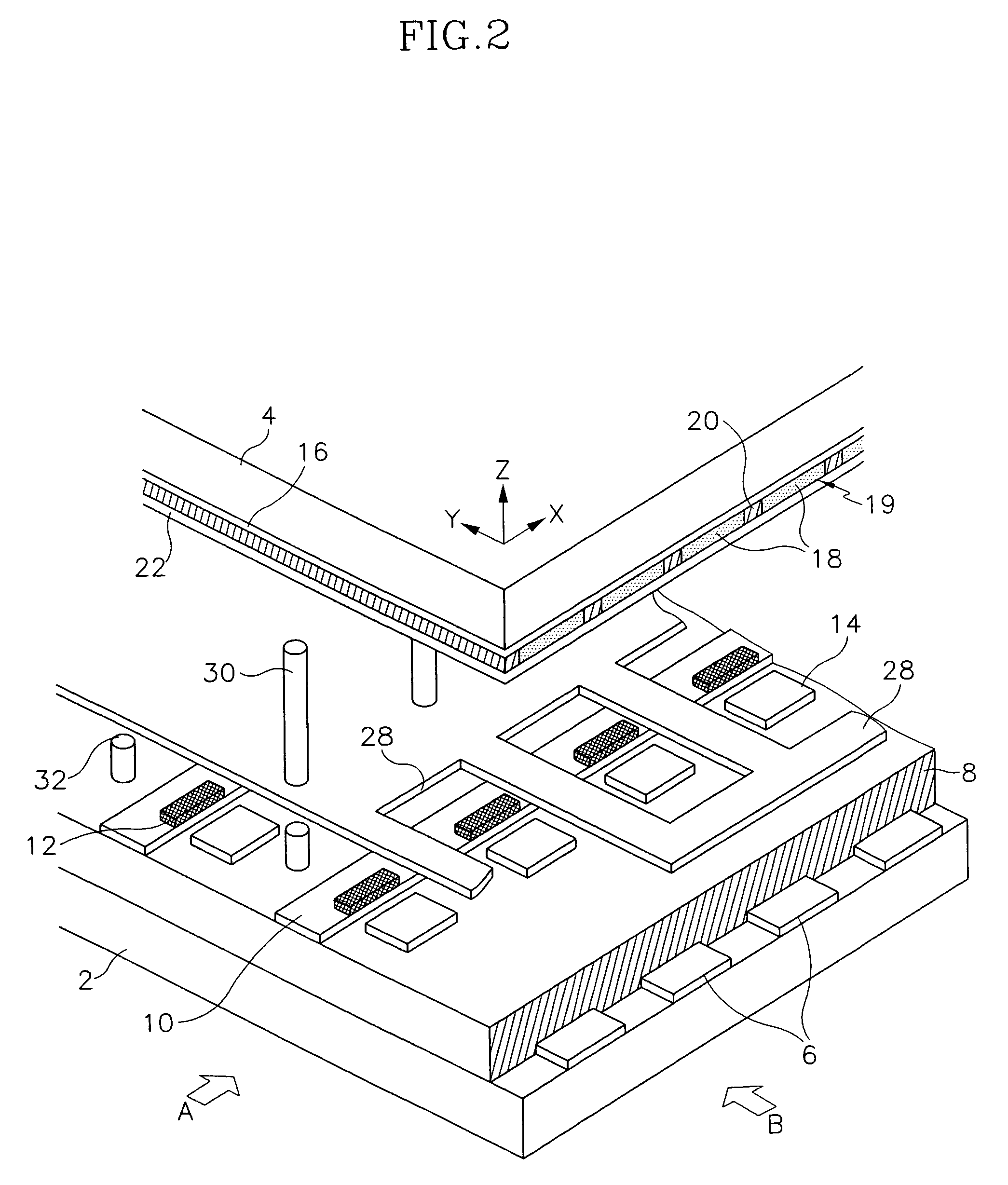Field emission display having damage prevention anode input terminal layers
a field emission display and anode input technology, applied in the field of field emission displays, can solve the problems of reducing the vacuum in the fed, unsuitable metal layer 5/b>, negatively affecting the overall operation of the display, etc., to prevent the reduction of the strength of a thin metal layer and prevent the reduction of the vacuum level
- Summary
- Abstract
- Description
- Claims
- Application Information
AI Technical Summary
Benefits of technology
Problems solved by technology
Method used
Image
Examples
Embodiment Construction
[0027]Referring to FIGS. 1-4, the FED includes backplate 2 and faceplate 4. Backplate 2 and faceplate 4 are provided opposing one another with a predetermined gap therebetween. An electron emission assembly for emitting electrons through the formation of an electric field is formed on backplate 2. An illumination assembly for realizing predetermined images by interaction with electrons is formed on faceplate 4.
[0028]In more detail, with respect to the electron emission assembly, gate electrodes 6 are formed on a surface of backplate 2 opposing faceplate 4. Gate electrodes 6 are formed in a stripe pattern and along one direction of backplate 2 (for example, direction Y). Further, insulation layer 8 is formed over an entire surface of backplate 2 covering gate electrodes 6, and cathode electrodes 10 are formed on insulation layer 8. Cathode electrodes 10 are formed in a stripe pattern and in a direction substantially perpendicular to the direction of gate electrodes 6, that is, cathod...
PUM
 Login to View More
Login to View More Abstract
Description
Claims
Application Information
 Login to View More
Login to View More - R&D
- Intellectual Property
- Life Sciences
- Materials
- Tech Scout
- Unparalleled Data Quality
- Higher Quality Content
- 60% Fewer Hallucinations
Browse by: Latest US Patents, China's latest patents, Technical Efficacy Thesaurus, Application Domain, Technology Topic, Popular Technical Reports.
© 2025 PatSnap. All rights reserved.Legal|Privacy policy|Modern Slavery Act Transparency Statement|Sitemap|About US| Contact US: help@patsnap.com



